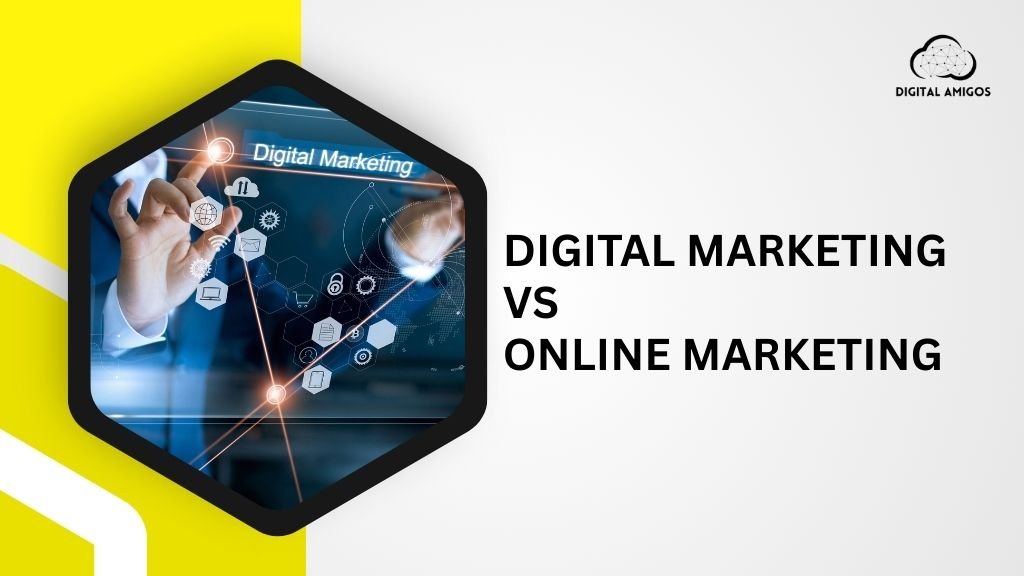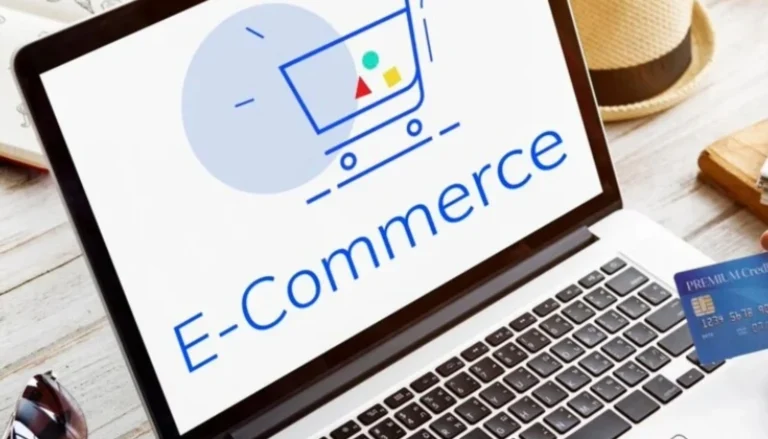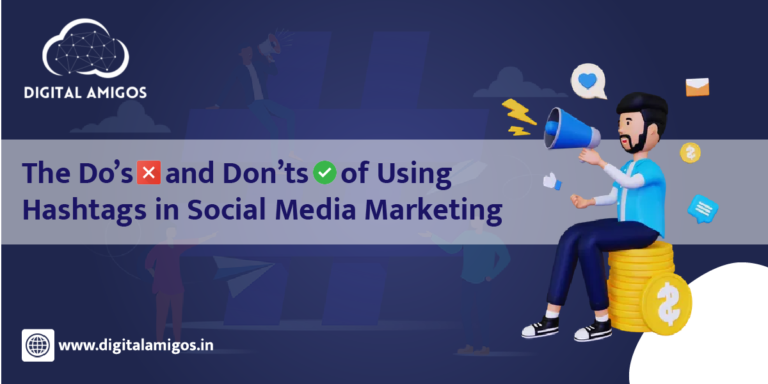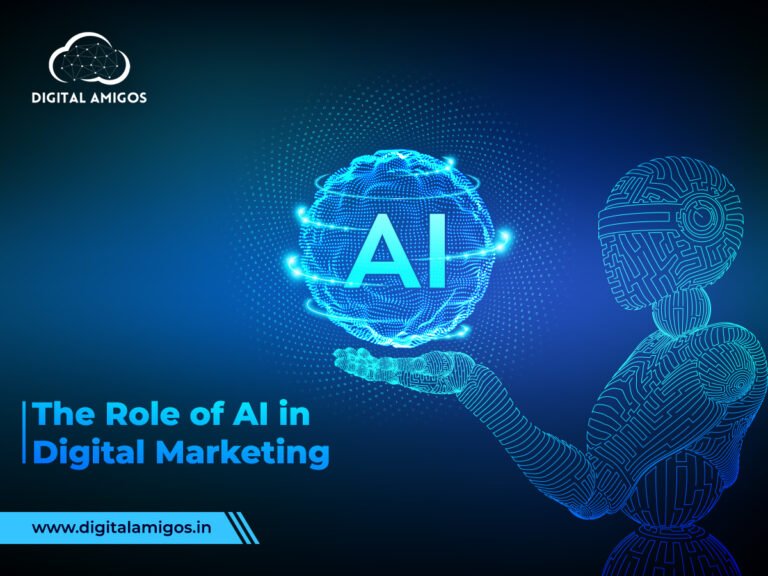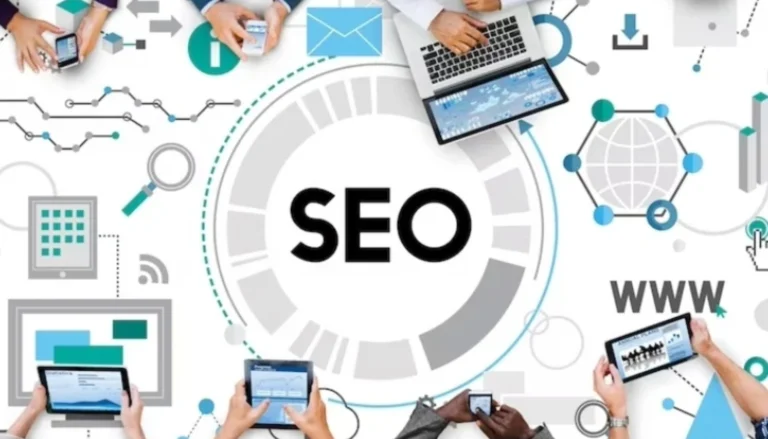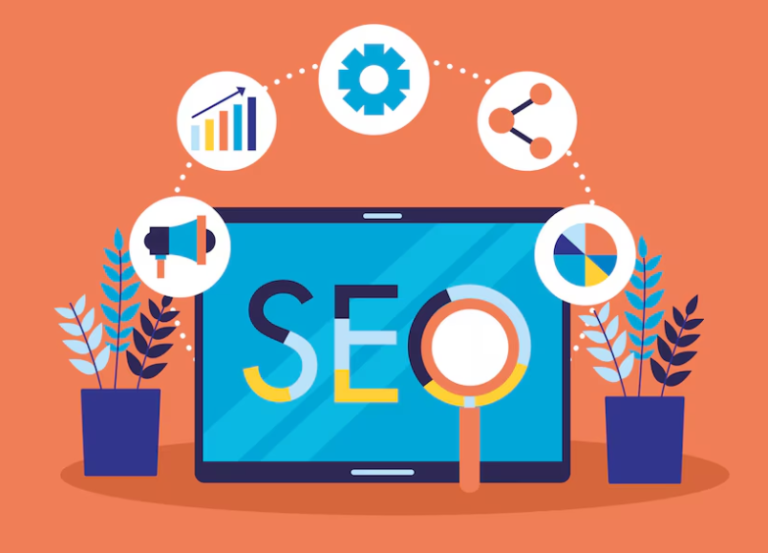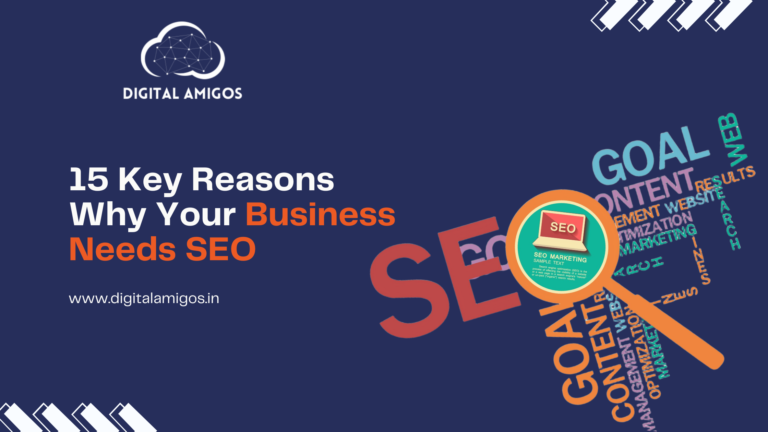Digital Marketing vs Online Marketing: Key Differences, Examples & Benefits
Which is better — building your own brand online or earning by promoting someone else’s?
That’s the choice many people face when they enter the world of online marketing. On one side, there’s digital marketing — where businesses use the internet to grow their presence, generate leads, and drive sales. On the other, there’s affiliate marketing — where individuals earn commission by recommending products and helping companies get more sales.
At first glance, they look similar. Both happen online. Both involve promoting products or services. And both can earn you serious income.
But look deeper, and you’ll see they serve completely different purposes, require different mindsets, and offer different types of control and earning potential.
Whether you’re a small business owner, a freelancer, or someone exploring ways to make money online in India — understanding the real difference between digital marketing and affiliate marketing can help you make smarter choices.
Let’s explore both paths — clearly and practically
What is Digital Marketing?
Digital marketing refers to the use of digital technology to promote products, services, or brands. Unlike traditional marketing (like print ads or radio spots), digital marketing works through digital devices — such as smartphones, laptops, smart TVs, and in-store digital screens.
But here’s the key point: digital marketing does not always require internet access.
That’s what separates it from online marketing.
For example, when a company sends promotional SMS messages, plays ads on smart TVs, or displays offers on a digital screen in a shopping mall — that’s digital marketing. It uses technology, but doesn’t necessarily need the internet at the consumer’s end.
💡 Why It Matters:
Digital marketing gives businesses more options. Whether your customer is connected to Wi-Fi or not, you can still reach them through mobile, television, or digital outdoor screens.
Examples of Digital Marketing (Online + Offline Mix)
- Search Engine Optimization (SEO): Improving website visibility on Google.
- Social Media Ads: Using Facebook, Instagram, YouTube, etc.
- SMS & WhatsApp Promotions: Sending messages directly to mobile phones.
- OTT Advertising: Ads on platforms like Hotstar, Prime Video, or MX Player.
- Digital Signage: LED screens in malls, hospitals, or stores showing promotional videos.
- App-Based Notifications: Messages through mobile apps (Zomato, Amazon, etc.)
- Email Marketing: Especially when used without fancy online tools.
What is Online Marketing?
Online marketing, also known as internet marketing, refers to any marketing activity that depends on the internet to reach users. It is a subcategory of digital marketing — one that works only through internet-connected platforms.
Whenever you promote your business through websites, social media, emails, or Google Ads — and it requires a live internet connection to function — it falls under online marketing.
📶 Internet-Only = Online Marketing
Marketing that works with the internet or requires the internet to function is called online marketing.
For example, a Facebook campaign, a YouTube pre-roll ad, or a Google search result are all online strategies. If there’s no internet, none of these touchpoints exist.
Examples of Online Marketing Channels
- Search Engine Marketing (SEM): Google Ads or Bing Ads that show up on search engine result pages.
- Social Media Marketing: Paid or organic content on Instagram, Facebook, Twitter, LinkedIn, etc.
- Email Campaigns via Platforms: Using internet-based tools like Mailchimp or Zoho to send bulk emails.
- Affiliate Marketing: Using bloggers or content creators to promote your services online for a commission.
- Influencer Marketing: Collaborations with digital influencers on YouTube, Instagram, or Twitter.
- Content Marketing: Blogs, how-to guides, infographics, and videos — all hosted online.
- YouTube and OTT Ads (when streamed): If your ad runs during a YouTube video, it’s an online channel.
Online Marketing Is Everywhere
Think about your own habits. When you:
- Search for “best hotels near me”
- Click on a YouTube video and see an ad
- Get an email about a sale
- Follow a brand’s Instagram page
You’re experiencing online marketing in action.
In Summary:
If the marketing campaign runs only on internet-connected platforms, it is online marketing. And because the internet is where most people spend their time, this type of marketing has become essential — especially for startups and ecommerce brands.
Key Difference Between Digital Marketing and Online Marketing
While both digital marketing and online marketing use modern technology, the main difference lies in one simple thing — internet dependency.
Digital marketing is a broader concept. It covers both internet-based methods (like social media or Google Ads) and offline digital tools (like SMS, digital billboards, or app notifications).
Online marketing is a part of digital marketing that includes only those activities which require the internet — like SEO, email campaigns, and influencer marketing.
In Simple Words:
All online marketing is digital marketing. But not all digital marketing is online marketing.
Brief Comparison Table
Here’s a side-by-side look at how these two differ:
| Point of Comparison | Digital Marketing | Online Marketing |
| Internet Required | Not always | Always |
| Scope | Broad – includes both online and offline channels | Narrow – limited to internet-based platforms |
| Examples | SMS ads, LED billboards, Google Ads, OTT ads | SEO, Instagram ads, YouTube videos, email tools |
| Audience Reach | Online + Offline users | Only online users |
| Best for | Brands with hybrid or physical presence | Online-first or ecommerce businesses |
| Tools Used | Digital screens, QR codes, apps, online tools | Only internet-based platforms |
Components of Digital Marketing
Digital marketing includes a wide range of channels and tools that use digital technology to promote products and services. It is not limited to internet-based platforms. The following are the core components of digital marketing:
1. Search Engine Optimization (SEO)
SEO focuses on improving a website’s visibility in search engine results. It involves optimizing content, technical aspects, and backlinks to increase organic traffic and rankings for relevant search queries.
2. Pay-Per-Click Advertising (PPC)
PPC refers to paid advertising models, such as Google Ads, where businesses pay each time a user clicks on their ad. It allows for targeted visibility and immediate traffic, often used for lead generation and ecommerce.
3. SMS Marketing
Promotional messages sent via text to mobile users fall under SMS marketing. It is effective for time-sensitive offers, reminders, and alerts — particularly in regions with limited internet penetration.
4. WhatsApp and Messaging App Marketing
Businesses use WhatsApp and similar platforms to send updates, offers, and service information. With high engagement rates in India, this has become a powerful tool for direct customer communication.
5. Email Marketing
Email marketing involves sending newsletters, promotional content, and transactional messages through email. It is widely used for both B2B and B2C communication and can be automated using various platforms.
6. Mobile App Marketing
Promotions delivered through a brand’s mobile application, such as push notifications, in-app messages, or rewards, fall under mobile app marketing. It focuses on user retention and re-engagement.
7. QR Code Campaigns
QR codes placed on packaging, printed materials, or banners allow users to quickly access websites, videos, or forms. This bridges offline interaction with digital content.
8. Digital Signage and LED Displays
Screens placed in stores, malls, and public areas can display advertisements, updates, and offers. These do not rely on the internet and are considered part of offline digital marketing.
9. OTT and Smart TV Advertising
Ads shown on streaming platforms such as Disney+ Hotstar, Zee5, and SonyLIV allow businesses to reach targeted audiences through digital video content.
Conclusion of This Section:
Digital marketing includes both online and offline digital channels. Its versatility allows businesses to reach their audience across different platforms — not just through internet-based methods.
Components of Online Marketing
Online marketing refers to all marketing efforts that rely on the internet to function. It includes strategies that use web-based platforms to reach and engage users. Below are the primary components:
1. Website Marketing
A website acts as the digital foundation for most businesses. It should be responsive, user-friendly, and optimized for search engines. Website marketing includes content, landing pages, forms, and conversion tracking.
2. Search Engine Optimization (SEO)
SEO for online marketing focuses on improving a website’s visibility in unpaid search engine results. It involves keyword research, content creation, technical optimization, and backlink building.
3. Search Engine Marketing (SEM)
Also known as paid search advertising, SEM includes campaigns on platforms like Google Ads. Businesses pay to display ads for specific search queries, gaining immediate visibility on search results pages.
4. Social Media Marketing (SMM)
This involves creating and promoting content on platforms like Facebook, Instagram, LinkedIn, Twitter, and YouTube. It may include both organic strategies (unpaid posts) and paid advertising.
5. Email Marketing via Online Tools
Unlike basic email, online marketing uses tools like Mailchimp, Zoho, or Sendinblue to automate, segment, and analyze email campaigns. It is commonly used for newsletters, offers, and customer engagement.
6. Content Marketing
Publishing blogs, articles, videos, guides, and infographics on websites or social platforms to attract and educate users. It supports SEO, builds authority, and nurtures leads.
7. Influencer and Affiliate Marketing
Partnering with content creators, influencers, or affiliate websites to promote products or services online. These partnerships help reach niche audiences with credible, word-of-mouth-style promotion.
8. Online Reputation Management
Monitoring and responding to reviews on platforms like Google Business Profile, Justdial, or Trustpilot. Reputation management helps build trust and influences consumer decisions.
9. Display and Banner Advertising
These are visual ads placed on websites, apps, or video platforms. They include image, video, or interactive formats targeted to users based on behavior, location, or demographics.
Conclusion of This Section:
Online marketing includes all efforts that are executed through internet-connected platforms. It plays a crucial role in reaching digital consumers, especially in an environment where most people use smartphones and search engines daily.
Where Do Digital Marketing and Online Marketing Overlap?
While digital marketing and online marketing are different in scope, there is a significant overlap between the two. This overlap occurs because many marketing channels and strategies require both digital technology and internet access to operate effectively.
Below are the key areas where the two approaches intersect:
1. Search Engine Optimization (SEO)
SEO is both a digital and online strategy. It uses digital tools and internet-based platforms to improve a website’s visibility. Although SEO falls under the broader digital marketing umbrella, it functions entirely online.
2. Social Media Marketing
Platforms such as Facebook, Instagram, Twitter, and LinkedIn require internet access but are part of the broader digital ecosystem. All activities on these platforms — organic or paid — represent the intersection of digital and online marketing.
3. Email Campaigns Using Online Tools
Email marketing can exist in both forms. However, when automated email sequences, campaign tracking, and list segmentation tools are used, it becomes an online activity within a digital marketing strategy.
4. Online Advertising
Whether it’s Google Ads, YouTube pre-roll videos, or display banners on news websites, these campaigns are digital by nature and delivered online. They rely on user behavior, real-time bidding, and internet data.
5. Video Marketing on Internet Platforms
Videos hosted on YouTube, Instagram, or streaming platforms require internet access and digital content production tools. This makes video marketing a common ground for both digital and online approaches.
Summary:
Many marketing methods today are considered part of both digital and online marketing. These strategies use the internet to deliver messages and digital tools to create, manage, and measure results.
Understanding this overlap helps marketers create integrated strategies that perform consistently across channels.
Real-World Example: How Businesses Use Both Digital and Online Marketing
To clearly understand how digital and online marketing are used in practice, let’s look at a practical example.
Scenario: A Clothing Brand Launching a Festive Sale
Using Digital Marketing (Online + Offline Channels)
The brand creates a comprehensive campaign that includes:
- Google Ads to promote festive offers
- Instagram and Facebook posts with product visuals
- Email newsletters sent to past customers with discount codes
- SMS alerts reminding users of the final sale days
- WhatsApp broadcasts for personalized recommendations
- LED signage in malls and stores displaying offer banners
- In-app notifications on the brand’s mobile app
Analysis:
This strategy uses both internet-based platforms (Google Ads, social media, email) and non-internet digital tools (SMS, LED displays). Therefore, it is a complete digital marketing campaign that includes online marketing within it.
Using Only Online Marketing
If the same brand chooses to focus only on:
- Google Search and Display Ads
- Reels and influencer posts on Instagram
- Product videos on YouTube
- Automated email campaigns through Mailchimp
- Flash sale announcements via the brand’s website
Analysis:
All these activities require the internet to function and are executed through online platforms. This is strictly an online marketing campaign, and while effective, it excludes offline digital touchpoints.
Key Takeaway:
Businesses often combine both approaches for maximum impact. While online marketing helps with reach and targeting, offline digital tools add local visibility and personal engagement. A balanced approach allows brands to cover all customer touchpoints — both online and offline.
Benefits and Limitations of Digital Marketing and Online Marketing
Understanding the strengths and weaknesses of both approaches can help businesses plan campaigns more effectively. While there is overlap between digital and online marketing, each has its distinct advantages and limitations.
Benefits of Digital Marketing
- Wider Reach: Combines both online and offline digital channels, increasing overall coverage.
- Multiple Touchpoints: Engages users through websites, apps, SMS, displays, and more.
- Flexibility: Suitable for businesses with physical presence or service-based models.
- High Personalization: Enables targeted messaging via mobile apps, email, and WhatsApp.
- Better Local Impact: LED screens and offline digital tools enhance visibility in specific locations.
Limitations of Digital Marketing
- Higher Setup Costs: Setting up digital displays or SMS infrastructure may involve additional investment.
- Measurement Challenges: Offline digital efforts (e.g., LED signage) may not offer real-time data tracking.
- Requires Coordination: Managing both online and offline assets demands more planning and consistency.
Benefits of Online Marketing
- Cost-Effective: Many online tools are affordable or offer performance-based pricing (e.g., PPC).
- Easily Trackable: Analytics platforms provide real-time campaign data and insights.
- Scalable: Campaigns can be adjusted instantly based on performance.
- Wider Geographic Reach: Reach users across different cities or countries without physical infrastructure.
- Detailed Targeting: Allows targeting based on age, location, interests, and behavior.
Limitations of Online Marketing
- Internet Dependency: Limited to audiences with stable internet access.
- High Competition: Most platforms are saturated, making visibility more expensive over time.
- Ad Fatigue: Users may ignore repeated ads or develop banner blindness.
- Shorter Attention Span: Online audiences tend to scroll quickly, reducing engagement time.
Summary of This Section:
Both digital and online marketing offer strong capabilities, but neither is perfect. While online marketing provides speed, precision, and scale, digital marketing extends reach beyond internet-only platforms, making it ideal for businesses that need to connect with users across both digital and physical environments.
Importance of a Hybrid Strategy in 2025 and Beyond
As consumer behavior continues to evolve, the line between online and offline interactions is becoming increasingly blurred. Customers now expect brands to be present across multiple digital touchpoints — not just on social media or search engines, but also through apps, SMS, email, and even digital displays in physical locations.
This shift makes a hybrid digital strategy — combining both digital marketing and online marketing — more important than ever.
1. Customers Use Multiple Channels
Today’s consumers browse products online, compare prices on apps, receive reminders via WhatsApp, and see brand ads on smart TVs. They don’t follow a straight path — their journey is multi-platform and often unpredictable.
A hybrid strategy ensures your business is visible wherever your audience spends their time, whether on Instagram, YouTube, their inbox, or while shopping offline.
2. Higher Brand Recall
When users see your brand on different channels — an email in the morning, a Facebook ad in the afternoon, and an LED screen outside a metro station — it reinforces your brand identity.
This cross-platform presence helps increase recall, trust, and response rates.
3. Better Audience Coverage
Not every customer will be active on the internet 24/7. In areas with low connectivity or among certain age groups, SMS or offline digital displays can still play a major role in communication.
Combining online platforms with non-internet digital tools ensures no audience segment is left out.
4. Increased Flexibility and Resilience
A hybrid approach allows businesses to shift focus when needed. For example, if online ad costs rise during a festive season, businesses can rely more on SMS or app-based promotions. This makes marketing more agile and cost-effective.
5. Improved Data and Insights
Online campaigns offer analytics, while offline digital channels (like QR scans or app opens) can also provide measurable data. When combined, businesses get a fuller picture of customer behavior, helping them improve targeting and content.
Conclusion of This Section:
In 2025 and beyond, businesses that adopt a hybrid digital strategy will have a competitive edge. By balancing online precision with offline presence, they can deliver consistent, relevant, and timely messages — no matter where the customer is.
Conclusion
Digital marketing and online marketing are closely related, but not identical. Online marketing is a subset of digital marketing, limited to internet-based platforms, while digital marketing covers a broader spectrum — including both online tools and offline digital methods like SMS, app notifications, and digital displays.
Understanding this distinction is important for businesses aiming to plan efficient and effective marketing strategies. Online marketing offers fast, measurable reach and is ideal for internet-savvy audiences. On the other hand, digital marketing provides more flexibility by including non-internet channels that can reach a wider demographic, especially in areas with limited connectivity.
For most businesses today, the best approach is not to choose one over the other, but to use both together. A hybrid strategy ensures better coverage, stronger brand presence, and improved customer engagement — across all digital touchpoints.
By aligning your marketing methods with where your audience actually is — online or offline — you create a system that is both practical and powerful.

